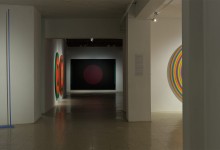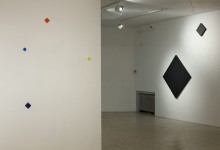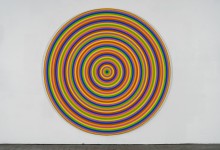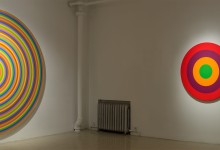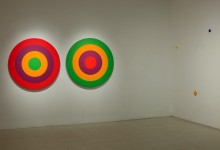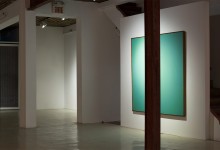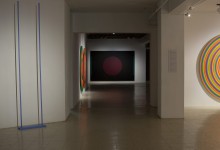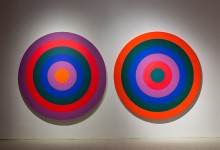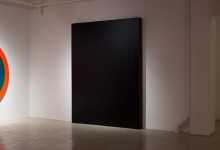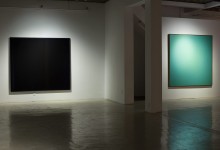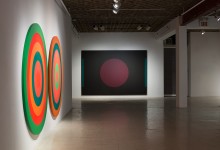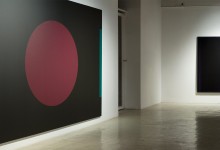Opening reception: Saturday, November 5 from 3-5 p.m.
Claude Tousignant: Artist’s Selection
Art Mûr, Montreal (QC)
Tousignant Says:
A casual conversation between artist Claude Tousignant and writer Isa Tousignant.
The show is titled “Artist’s Selection.” Could you tell me about your selection process?
I thought of works that had barely ever been shown—maybe once or twice only. Some works stand out: Tableau noir pour enfant snob, for example, is a work I find extremely special. Grand vert-noir is one of the rare pieces that I’ve partially reworked in recent years (I nearly never do that). It was never shown because of its size. The same goes for Monochrome bleu, which was only exhibited once at the Montreal Museum of Fine Arts in 1982. Most of the other works are doubles, which also enjoy lots of space.
There’s a weird rumour circulating that this might be your last show.
Oh yeah! I just mentioned that it might well be the last show I put on in my lifetime. I am 83 after all. But it was just a joke—a sad joke. I have an exhibition at Christopher Cutts in Toronto in April 2017. Other than that, I don’t do much anymore.
That isn’t true! I think you have such a crazy work ethic that you expect to be able to do everything you always did, despite your age.
No, it’s because in the old days, like when I was painting the Accélérateurs chromatiques, I worked nearly 10 hours a day.
My point exactly. Lots of artists paint very complex things, but most still don’t put 10 hours a day on it. It just takes them longer to finish. You’ve always been at the studio day in, day out, year-round, from 10 to 6 every day. You’re productive when you’re painting, but you’re also always brainstorming on the next project.
Yes, I have produced a lot. But now I only work afternoons. My best days are behind me.
My goodness, what a drama queen. When you think back on your career, what periods stand out as your favourites?
That has a lot to do with the period of production. The Chambly period was very pleasant, because I was in a rural setting and I was very enthusiastic about the work I was doing. It was so much fun—I’d just finished a series of sculptures, and these paintings were so free and immediate.
Is the way that the work is received also a factor in the pleasure it provides?
Yes, absolutely. Some artists may deny it, but it’s always part of the equation. It’s like a woman who wears makeup; if people find her attractive, it will help shape her style. But if she wears lots of black eyeliner and people react negatively toward it, she’ll probably stop doing it. It’s a weird comparison, but you know what I mean.
Yes, you’re saying it’s an aesthetic conversation. You make your statement and then it’s out there for the world to react to. You’ve been lucky, in a way; because you decided very young never to work with exclusive dealers, you’ve avoided being swayed by financial forces. I think many artists struggle with the trap of having to keep producing what sells well.
That’s for sure. I’ve always done exactly what I wanted to do. But I’ve been very lucky when it comes to my place in the history of Montreal painting. I know I have talent, but luck played its part.


